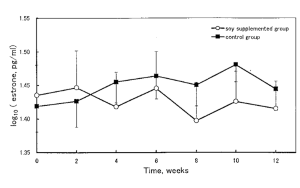Right now in 2015, it is easy to notice that cell phone use has skyrocketed over the past decade. According to Craig Lefebvre, Ph.D, there were 255.4 cell phone owners in the United States alone in 2007, which accounted for 84% of the total U.S. population. Global estimations of cell phone use have been as high as 2 billion people and that was in 2005, a decade ago (wikinvest). With the increase in popularity of cell phones, there has been a growing degree of speculation as to whether cell phone use has detrimental effects on human health. With the speculation have come many studies to determine whether cell phones are in fact unsafe.
The most popular debates center on the cell phone’s effect on sperm quality while in the regular pant pocket area and on its effect on the human brain while held next to the ear. A common agreement among researches is that cell phones are the most potentially dangerous while in talk mode. The main instance where this may affect spermatozoa is when the phone is left in the pocket while the user has Bluetooth enabled. This may be a factor behind the recent increase in the infertility rate among the male population, which is now 1 in 20 (De Iuliis et al.). It took about a century for humans to fully realize the dangerous effects of smoking cigarettes and it seems that the dangers of cell phone use may also take a while to be universally accepted and understood.
In a randomized crossover study conducted in 2009, Nora D. Volkow, M.D., the Director of the National Institute on Drug Abuse in Bethesda, Maryland, and 8 other professionals evaluated the influence of the cell phone’s radiofrequency signals on the health of the human brain. In particular, they tested the relationship between cell phone use and brain glucose metabolism, which is the indicator of brain activity. The experiment enlisted 47 healthy participants who had their brain glucose measured after two 50-minute periods. For both of the 50-minute periods, a Samsung model SCH-U310 cell phone was attached to both the left and right ear. In one period, the right cell phone was turned on for all 50 minutes while the other was turned off. In the other period, both phones were turned off. After the periods had ended, a (18F)fluorodeoxyglucose injection was used to measure brain glucose metabolism. The results showed that the metabolism in the whole brain was unchanged regardless of the cell phone, but the metabolism in the region of the brain closest to the activated cell phone’s antenna was higher than the metabolism near the cell phones turned off. With the cell phone in talk mode, the metabolism near the antenna was measured at 35.7 μmol/100 g per minute whereas with the phone off it was measured at 33.3 μmol/100 g per minute, which is a statistically significant finding (P = .004). This main finding is not enough to unequivocally prove that the waves emitted by cell phones are unhealthy for the human brain, though.
Now to the matter of the possible effects of radiofrequency electromagnetic radiation (RFEMR) on sperm quality. In 2008, Ashok Agarwal, Ph.D., of the Center for Reproductive Medicine in the Glickman Urological and Kidney Institute in Cleveland, Ohio, and a group of 6 other scientists tested whether these effects exist with a prospective pilot study. They did so by taking neat seamen samples, which contain mature and immature sperm, from 23 healthy donors and 9 infertile donors. Each sperm sample was divided into two and each division was called an aliquot. One randomly chosen aliquot from each donor was placed into the control group and the other aliquot was placed into the experimental group. The experimental group aliquots were exposed to cell phone radiation from a cell phone in talk mode at a distance of 2.5 cm from the cell phone antenna for 1 hour. The distance was 2.5 cm because that is about the regular distance between the testes and the position of a cell phone in a pocket. The aliquots in the control group were placed under identical conditions for 1 hour except for the exposure to RFEMR. After the testing period, the individual sperm cells in the experimental group showed a significant decrease in motility and viability in comparison to those of the control group. In this case, motility means movement and viability essentially means whether or not the sperm are alive. The study also found a significant increase in reactive oxygen species (ROS) level among the exposed aliquots, but did not find any significant difference in DNA damage or antioxidant capacity (TAC) in the semen. These results indicate that the RFEMR released from cell phones may cause oxidative stress on spermatozoa, thus leading to infertility in men.
In 2009, Geoffry N. De Iuliis, Ph.D., of the School of Environmental and Life Sciences at the University of Callaghan in New South Wales, Australia, and 3 other researchers ran a very similar study and further validated the conclusion that cell phones in talk mode cause oxidative stress in sperm. Like the study conducted by Agarwal et al., this experiment used semen samples in vitro. There were 22 healthy donors who averaged 24 years of age. Using the same aliquot division system, the semen of the control group was incubated at room temperature for 1 hour while the semen of the experimental group was exposed for the same amount of time to a frequency of 1.8 GHz, which is about the regular frequency that a cell phone emits in talk mode. Like the procedure of the study itself, the results were very similar to those of the previously mentioned study. De Iuliis et al. found a significant comparative decrease in sperm motility and viability among the exposed aliquots as well.
Since all of these experiments were conducted well, it is not likely that confounding variables or chance affected their results. While the results of all these experiments do not certainly prove the negative effects of cell phones, they still support the recently popularized theory that cell phones are detrimental to human health.





















